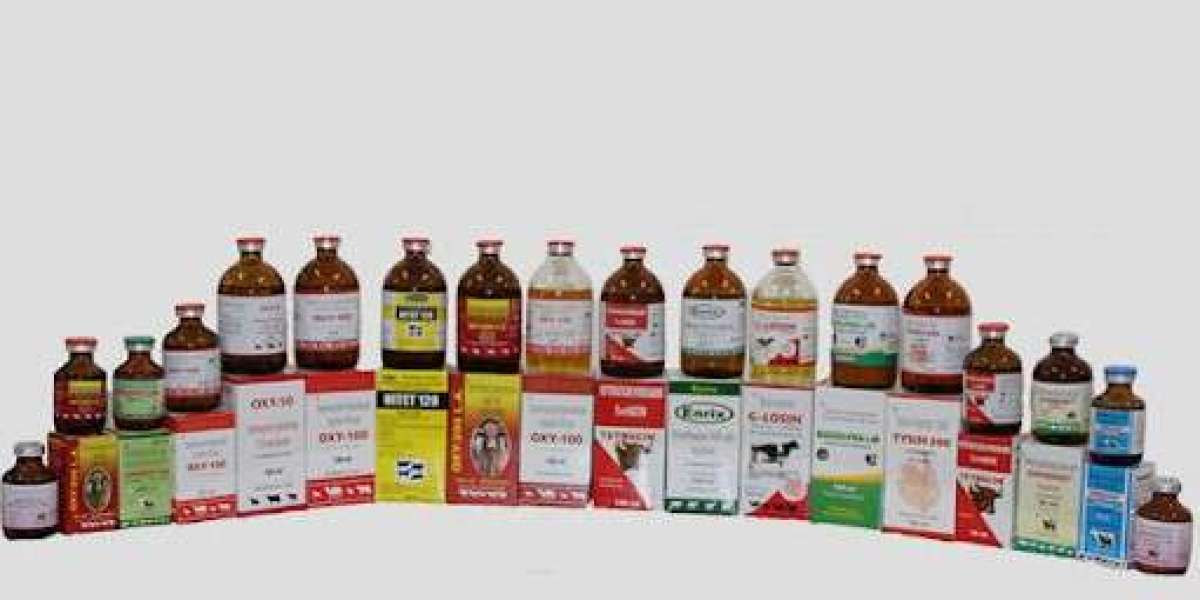Understanding Veterinary Products: Safeguarding Animal Health and Welfare
Veterinary product play a vital role in the prevention, diagnosis, and treatment of diseases in animals. From livestock and pets to exotic species and wildlife, these products are designed to improve animal health, enhance productivity, and ensure animal welfare. As the global demand for animal protein rises and pet ownership increases, the importance of veterinary products in both commercial and domestic settings continues to grow.
What Are Veterinary Products?
Veterinary product are a wide range of substances, preparations, or devices used to treat or prevent animal diseases or to improve the health and productivity of animals. They can be broadly categorized into several groups:
Pharmaceuticals – These include antibiotics, antiparasitics, anti-inflammatory drugs, and other medications used to treat or prevent diseases.
Vaccines – Used to build immunity against specific infectious diseases, reducing the incidence and severity of outbreaks.
Nutritional Supplements – Products that support optimal health and growth by supplying essential vitamins, minerals, and other nutrients.
Ectoparasiticides and Endoparasiticides – These include flea, tick, and worm treatments.
Topical and Dermatological Agents – Creams, sprays, and shampoos used for skin infections, allergies, and wound healing.
Diagnostic Tools and Devices – Test kits, thermometers, and imaging tools to identify illnesses and monitor health.
Surgical Supplies and Instruments – From basic tools to high-tech equipment for veterinary surgeries and procedures.
Importance of Veterinary Products in Livestock Health
In the agricultural sector, veterinary products are essential for ensuring the health and productivity of livestock such as cattle, poultry, sheep, pigs, and goats. Healthy animals produce better quality meat, milk, and eggs, contributing to food safety and security.
Vaccines and antiparasitics are particularly crucial in preventing widespread diseases like foot-and-mouth disease, avian influenza, and parasitic infections. Without these tools, disease outbreaks could devastate herds and flocks, resulting in severe economic losses for farmers and disruptions in the food supply chain.
Moreover, appropriate use of veterinary pharmaceuticals helps control zoonotic diseases – illnesses that can be transmitted from animals to humans – such as rabies, leptospirosis, and brucellosis. This directly supports public health initiatives globally.
Veterinary Products for Companion Animals
With the rise in pet ownership, especially in urban areas, the demand for veterinary care and products for companion animals like dogs, cats, rabbits, and birds has surged. These animals are increasingly regarded as family members, and their health is a top priority for pet owners.
Products in this category include routine vaccinations (e.g., rabies, distemper, parvovirus), flea and tick preventatives, heartworm medications, dietary supplements, dental care products, and grooming supplies. Advanced therapeutics, such as cancer treatments and pain management medications, have also become more available for pets.
Moreover, innovations in veterinary diagnostics, including genetic testing and mobile imaging devices, have enabled earlier detection of diseases, improving outcomes and quality of life for pets.
Regulation and Safety
The development, production, and distribution of veterinary products are tightly regulated to ensure safety, efficacy, and quality. Regulatory agencies such as the FDA’s Center for Veterinary Medicine (CVM) in the United States, the European Medicines Agency (EMA), and equivalent bodies in other countries evaluate new veterinary drugs and biologics before they can be sold.
Proper labeling, dosage instructions, withdrawal periods (especially in food-producing animals), and adverse event monitoring are also enforced to prevent misuse or overuse. The responsible use of antibiotics, in particular, is a major global concern to mitigate the risk of antimicrobial resistance (AMR), which affects both animals and humans.
Trends and Innovations
The veterinary product industry is undergoing rapid innovation, driven by advances in biotechnology, digital health, and precision medicine. Some of the key trends include:
Personalized Veterinary Medicine: Tailored treatments based on the genetic profile or specific needs of an animal.
Telemedicine and Remote Monitoring: Use of mobile apps, wearable devices, and virtual consultations for continuous animal care.
Natural and Organic Products: Increased consumer preference for herbal, organic, or eco-friendly veterinary solutions.
Improved Vaccine Technologies: Development of recombinant vaccines and needle-free delivery systems for better immunization outcomes.
One Health Approach: Integration of animal, human, and environmental health in designing and using veterinary products.
Challenges Facing the Industry
Despite the growth and innovation, the veterinary product industry faces several challenges. These include:
Antimicrobial Resistance (AMR): The misuse of antibiotics in animals contributes to resistant bacteria, affecting both veterinary and human medicine.
Regulatory Hurdles: Lengthy and costly approval processes can delay the availability of new products.
Accessibility in Low-Income Regions: In many developing countries, farmers and pet owners still lack access to basic veterinary services and products.
Public Misinformation: Mistrust in vaccines and medications, often fueled by misinformation, can hinder disease control efforts.
Conclusion
Veterinary products are indispensable tools in maintaining animal health, enhancing food production, and protecting public health. Their responsible use, supported by research, regulation, and education, can lead to healthier animals and safer communities. As technology continues to evolve, the future of veterinary medicine looks promising, with innovations that benefit both animals and the people who care for them.














